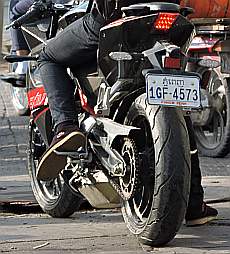
Something of a footnote to the first generation of Honda Cubs is the Honda Chaly, a smaller lighter machine that appealed to a special group. Click here to see the Chalys.
Charlie Dittmeier's Home Page

Something of a footnote to the first generation of Honda Cubs is the Honda Chaly, a smaller lighter machine that appealed to a special group. Click here to see the Chalys.
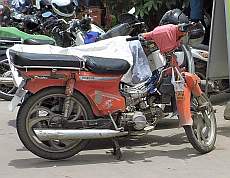 Motorcycles are the number one mode of transportation in Cambodia. They are not only cheap and reliable, but they can also go places, e.g., along the dikes between rice paddies, where cars and tuk-tuks can’t venture. This is the first of a series of photos about the development of motorcycles in Cambodia. Click here to see the first generation.
Motorcycles are the number one mode of transportation in Cambodia. They are not only cheap and reliable, but they can also go places, e.g., along the dikes between rice paddies, where cars and tuk-tuks can’t venture. This is the first of a series of photos about the development of motorcycles in Cambodia. Click here to see the first generation.
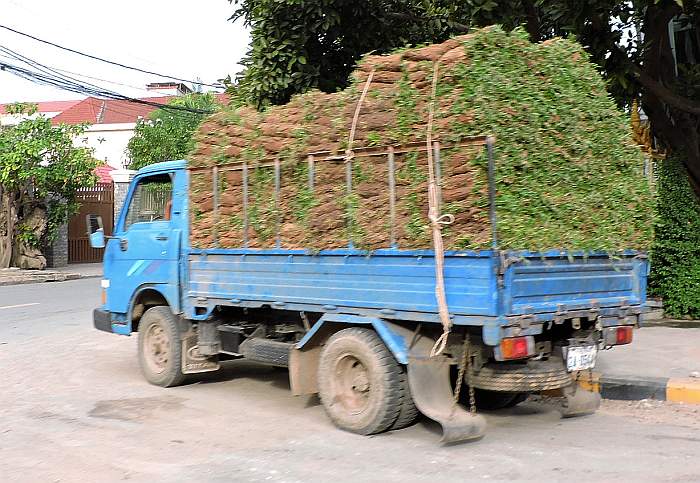
A truck full of sod is not a really unusual sight in many countries, but it is a bit of an oddity in Phnom Penh. There is very little grass in the cities and grass is not appreciated in itself. The last house where I lived, I watched with interest from my third-floor window as the family who lived on the large lot next door would go out with big knives and meat cleavers and assiduously scrape away any grass that dared to grow up. They wanted the bare mud! I do see more grass appearing in various places now, but it is rare enough that it is noticed.
Cambodia has realized a new transportation mode in the last year and a half or so. Phnom Penh is really weak on public transportation and so getting around has generally depended on motorcycle taxis (motordupes) or tuk-tuks. But now a new vehicle has appeared, what is called an autorickshaw in India where I first used them. It is a small three-wheeled vehicle mostly enclosed. What has made them so attractive since their introduction has been the hailing system–a smartphone app that usually brings a PassApp within two minutes–and their cheap prices. They are cheaper even than a motorcycle taxi and what is so great, the fare is calculated on the smartphone so that you know exactly what you need to pay and there is no need to haggle with the driver.
That’s the good part. Generally I have found the drivers exceptionally polite and efficient, but last Friday when I was returning home, I engaged a driver who seems to be a real cheat and who took me way out of the way. What is so weird is that the journey is recorded on a map which is sent to the telephone of the customer so I can easily show how he cheated me.
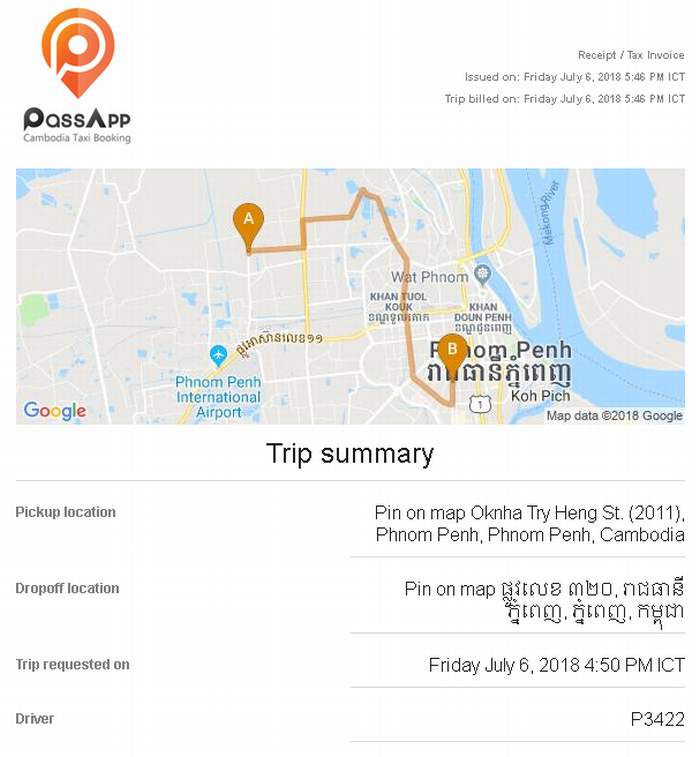
I left Point A and should have traveled east before turning south to the Maryknoll office. Instead the driver turned north, clearly shown on the map, and added approximately 25% to the fare. I had ridden the same route three times previously in a two-day period so I knew what the fare should be.
I contacted the PassApp company and they promised to deal with the driver, implicated by the receipt with map that his phone sent to me!

This is a somewhat new scenario in Phnom Penh. Most people have never seen a moving train in Cambodia. I have been here eighteen years and this is the third time I have seen a train. The tracks from 80 years ago were not maintained and didn’t even reach their destinations. Up until this year, there was one train a day in each direction to Sihanoukville, the port in the south. The 135 miles took 12 hours.
Now there is a push to get the tracks going all the way to Thailand and a month ago, a commuter train was set up to run from the airport every thirty minutes. That is the train above.
They haven’t quite got the hang of it yet. The gates are manually operated and note that the operator is raising the gate as soon as the engine arrives, I guess figuring they don’t need the gate down because no one can drive through the train?
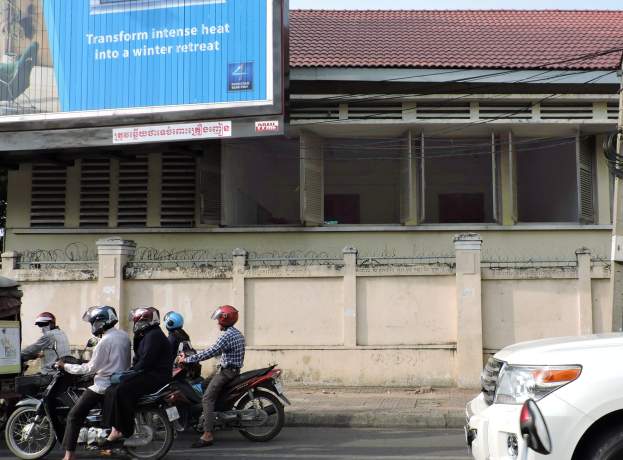
This is a picture of a government school, set on one Phnom Penh’s busiest streets, at 7:40 AM on a Saturday morning. You can learn a lot about the culture from one photo. First, notice the huge billboard set up on the school grounds, right next to the building.There are no zoning regulations that are enforced–if there are zoning regulations. (My bet is that the school director (principal) is profiting from allowing the sign company to build there.) Second, notice the school windows are wide open–in the rainy season when it’s raining every day. There’s no great worry about security because there’s nothing in the room except a blackboard (not a whiteboard) and wooden benches and two ceiling fans.
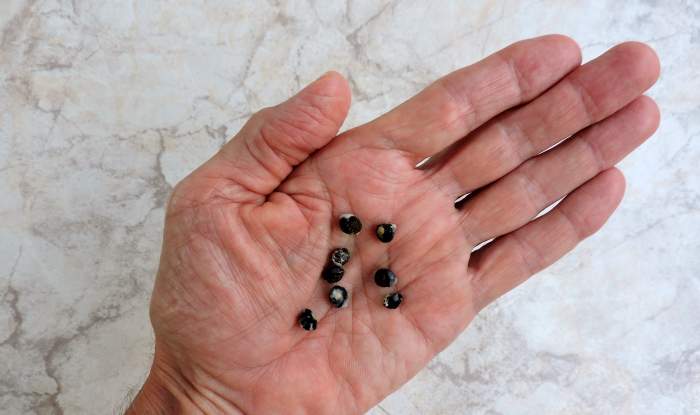
Do you know what these are? They’re banana seeds! We get all sizes, shapes, and colors of bananas here. They grow all year round–and really fast. Occasionally, with one variety about four inches long, I find seeds in them–not the usual small black dots but big monsters like these. At lunch today I found these eight seeds in one banana. It’s really easy to break a tooth on one of them because they’re not soft at all.
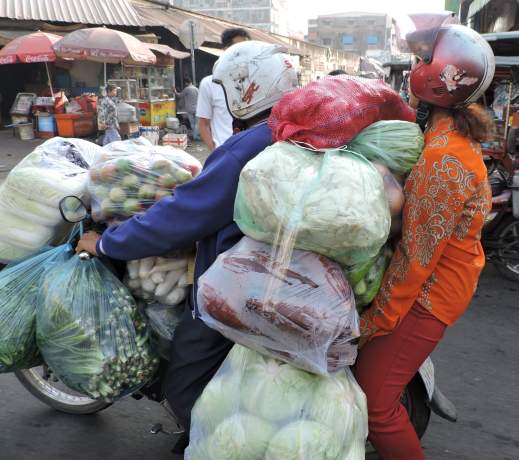
WHAT is she sitting on??!!

You don’t see them as much as you did a few years ago, but cattle still roam the streets of Phnom Penh which is really a large small-town. (At least they walk on the sidewalk!)

Most people, thinking of dangers in Cambodia, immediately suggest landmines and other ERW (Explosive Remnants of War). And the landmines are a threat. We average a casualty every three to four days–40 years after most of the mines were put down.
Another very big and on-going menace, though, is lightning. We’re in week 21 of this year and already 51 people have been killed by lightning. That’s more than two a week. In addition 40 others were injured, and 53 cows and buffalo were killed. Much of Cambodian life is lived outdoors. Rain or no rain, in the warm climate, the farming goes on and the children keep playing, and the lightning keeps striking.